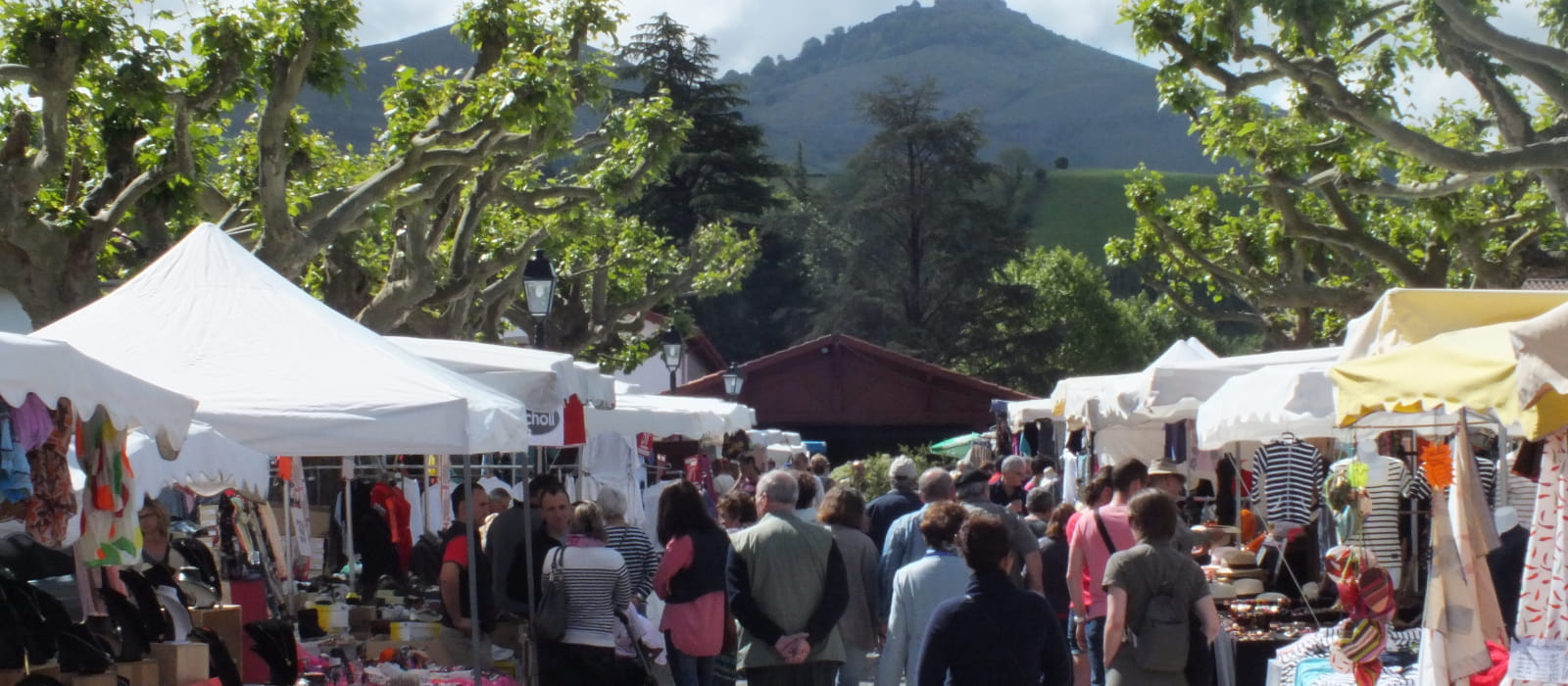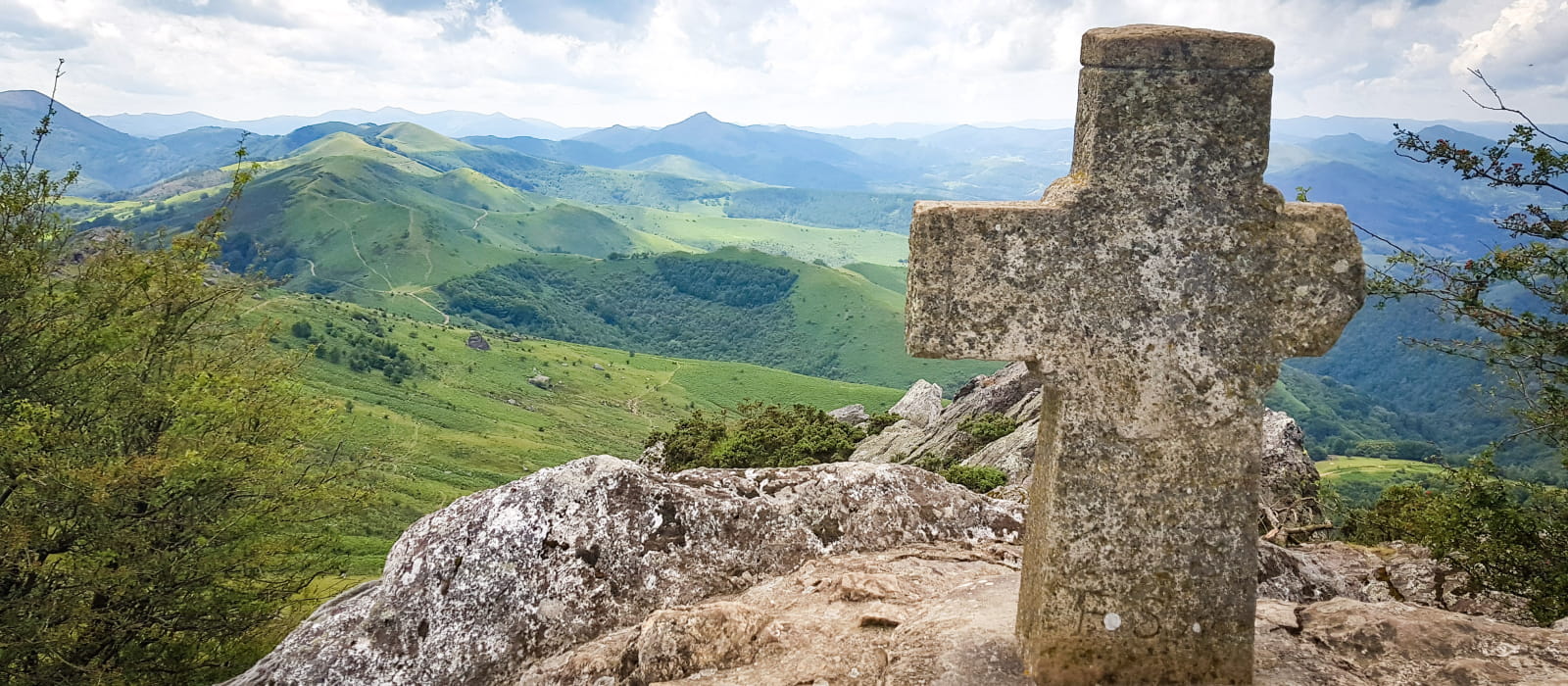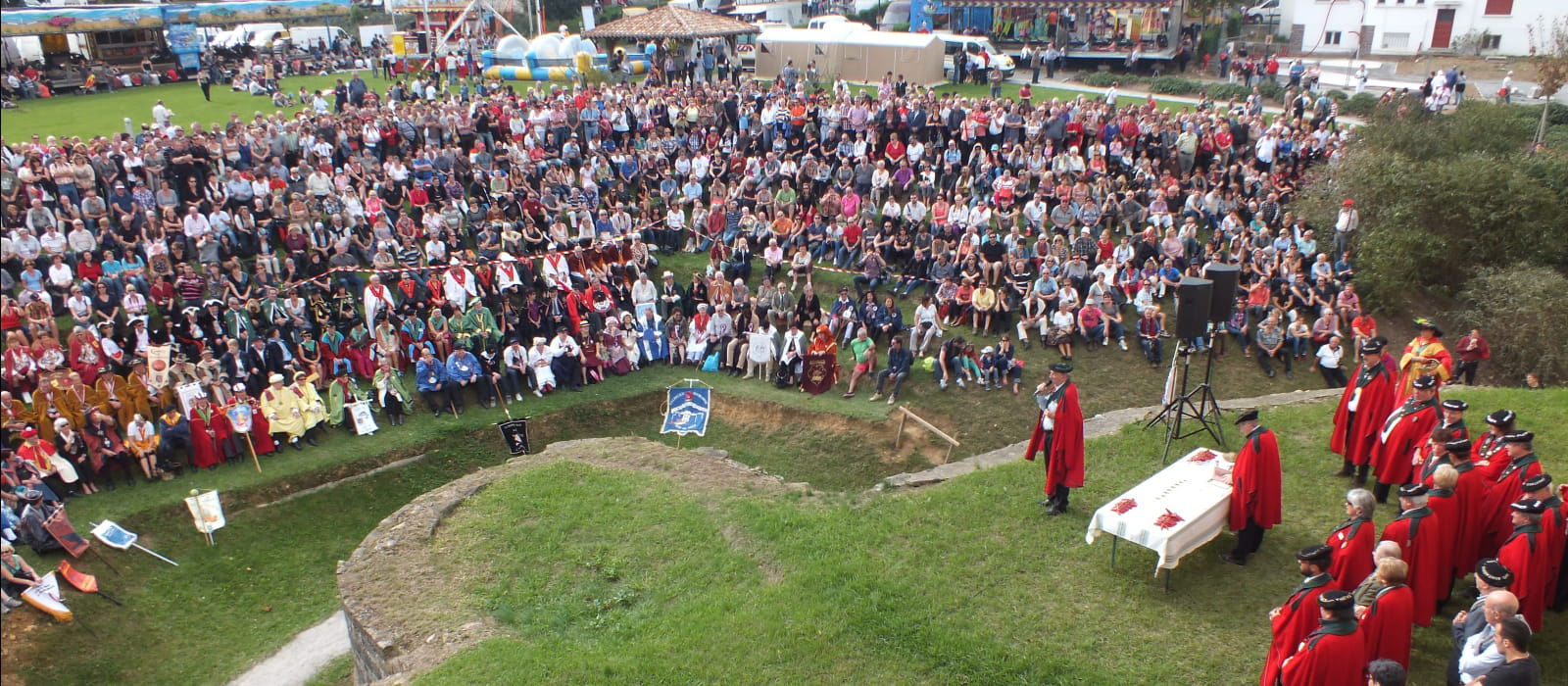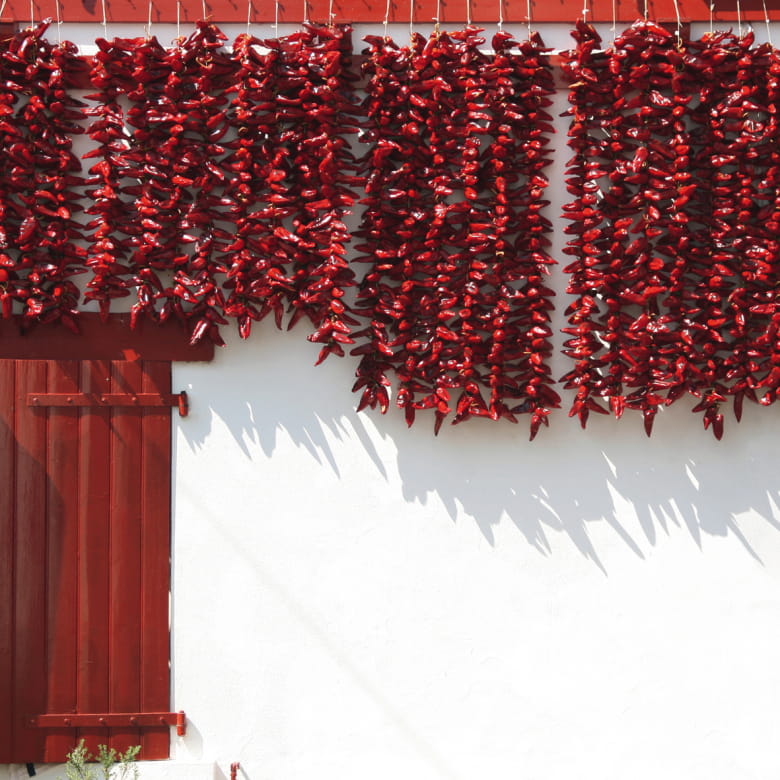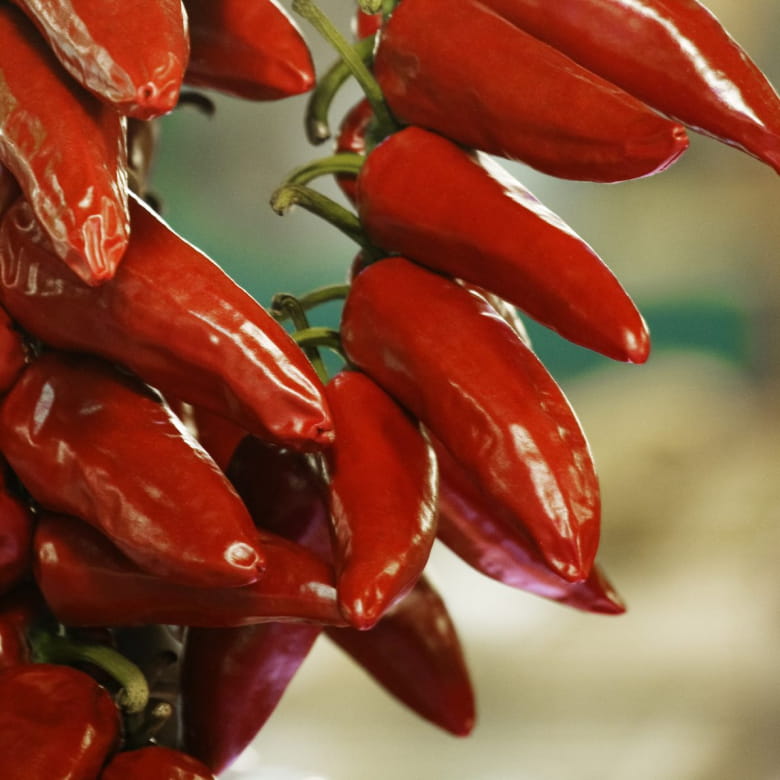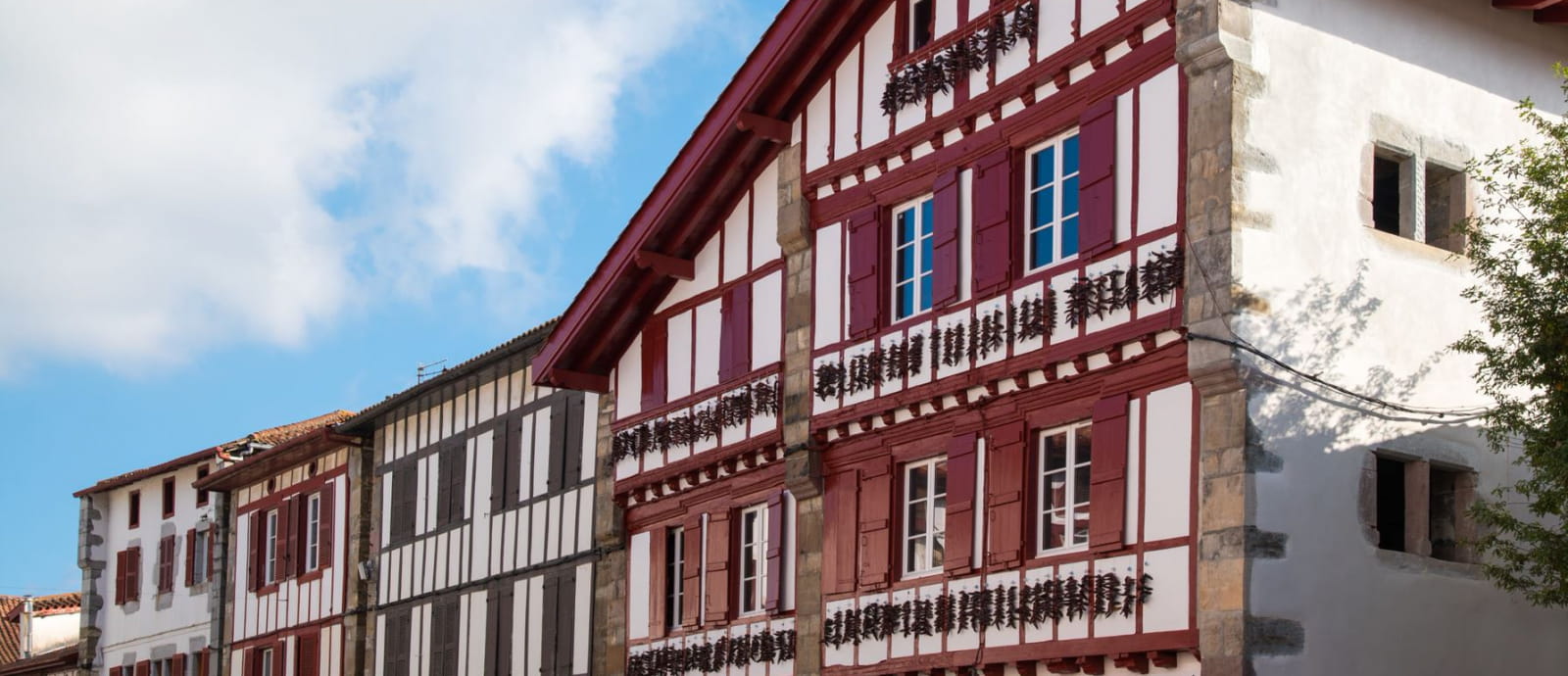
Espelette, capital of chilli
Ezpeleta
The village of Espelette truly represents the Basque village as one might imagine it. Founded by a noble family, it has become known throughout the world thanks to the cultivation of a spice from the other side of the Atlantic: the Espelette pepper.
a pedestrian village
Ezpeleta : oinezkoen herri
The village of Espelette is principally renowned for its pimento pepper. Indeed, you can see them at each street corner and hanging on the walls of many houses.
However, Espelette is also a village with a pedestrian centre and a pretty lane bordered with little artisanal shops and local producers.
The ambiance of the village makes you want to stroll around and take your time sitting on the terraces of the cafés or eating in the traditional village restaurants.
History
Historia
Espelette in Basque is Ezpeleta, which means a place planted with boxwood.
This name comes from a noble family that owned the territory of Espelette. They constructed a large fortified castle flanked with 5 towers to survey the land. Today, only a part of the outer wall and one tower remain. This houses the tourist information office, the Town Hall and a temporary exhibition space.
Espelette pimento pepper
Ezpeleteko biperra
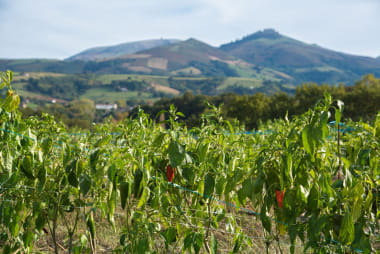
Espelette pimento pepper
To find the origins of this pimento pepper you have to head off in the direction of Mexico. The explorers must have brought the pimento back in the holds of their ships but we don’t know how it then arrived in Espelette.
It appeared in our area commencing 1650.
Originally, it was grown as a substitute for black pepper, which was very expensive at that time. It was already being used to season food and to conserve meat and ham.
An ancestral culture
In the past, it was planted in May and harvested at the end of August. At the end of the summer, the pimento peppers were threaded on to rope and hung to dry against house facades. When they were dry, they were placed in the bread oven until crisp and then crushed to make a powder.
This know-how has been transferred, unchanged, from generation to generation.
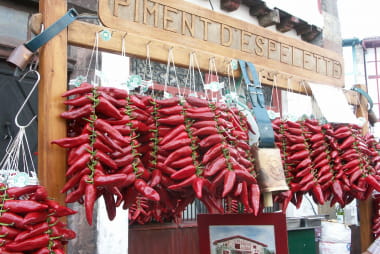
In rope, powder or fresh...
There are 3 forms available to the consumer:
· Red, fresh and whole, measuring about 7 to 14 cm without the stalk. These are normally used by the professionals.
· On a string with a minimum of 20 and a maximum of 100 peppers.
· In powdered form, used to spice up a variety of dishes.




